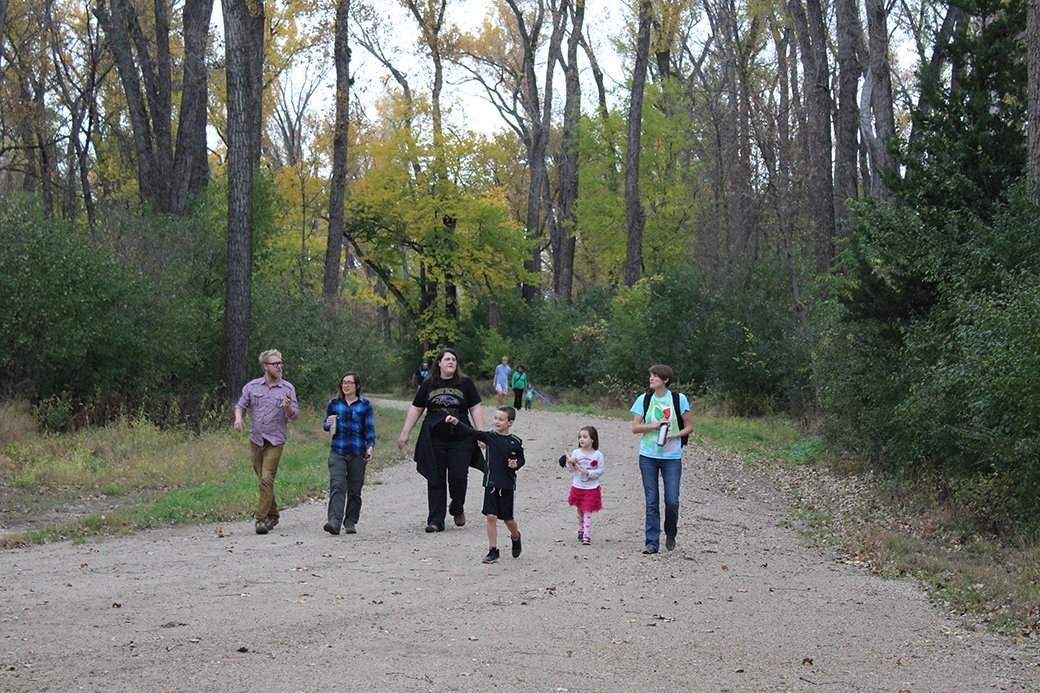
Frost Trail Hike brings together artists and scientists
On Saturday morning, Vermillion community members joined to hike the Frost Trail, the result of a partnership between Greening Vermillion and the sixth annual Art of Sustainability. Hikers followed the trail through the cottonwood forest to the sandbars of the Missouri River.
The hike brought both artists and scientists together to learn more about wildlife unique to the Missouri River.
Meghann Jarchow, program coordinator and assistant professor of sustainability and the board chair for Greening Vermillion, said even though the citizens of Vermillion have the Missouri River in their backyard, they often don’t utilize it.
“Getting people out onto the Missouri River is important, and the Frost Trail is new,” Jarchow said. “Last year at Earth Days, people came together and helped make the trail. The annual Art of Sustainability is a nice opportunity to go back to it and see all of the things we helped to do.”
Tim Cowman is the administrator with the South Dakota Geological Survey and a faculty member of the Missouri River Institute at USD. He said his goal is to make the wild and scenic part of the river more accessible to the public.
“There’s not a lot of public access that’s good for hiking around the river,” Cowman said. “The Frost Trail was a logical place to put a trail because it’s already public land.”
Cowman said the trail is now accessible for hiking. Construction on the trail will be finished next year.
Cowman said the trail will be suitable for use during May through October, and said he hopes to see hikers using it in the winter. He sees the trail as a good spot for cross-country skiing and snowshoeing.
Amber Hansen, an assistant professor in the art department, said her interest is not only creating community-based work, but bringing art students out into nature to make and record the natural world.
Hansen said students from all majors should experience Frost Trail and build a relationship with the Missouri River.
“If we engage in nature and create experiences within it, then we’ll be more likely to care about it and protect it,” Hansen said. “That was the motivation behind wanting to have the hike; to build relationships with the community and nature.”


